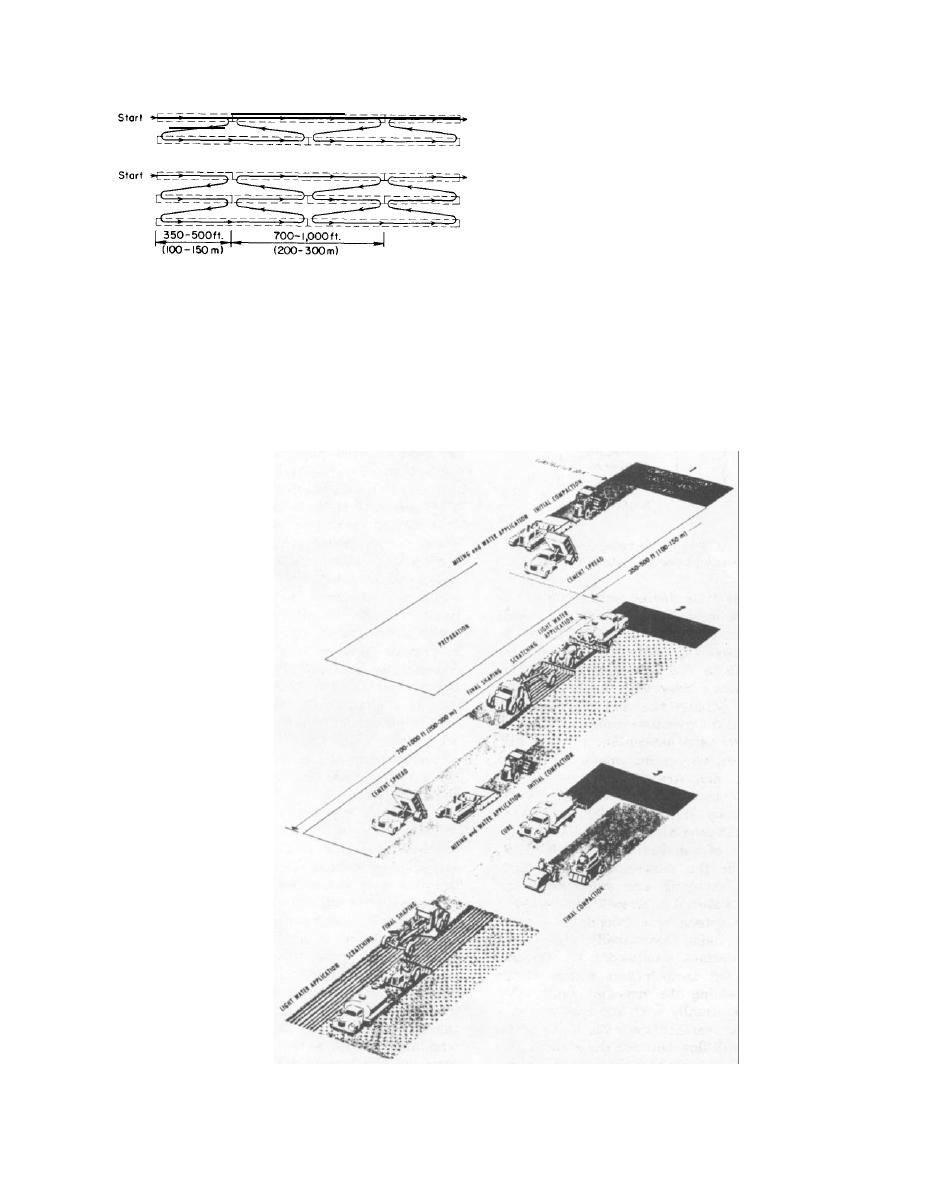
TM
5-822-14/AFJMAN
32-1019
spreading should be completed in the first working
2 WINDROWS
lane and under way in the second lane before
mixing operations are begun. This ensures a full-
width cement spread without a gap between lanes
3 WINDROWS
and keeps spreading equipment out of the way of
mixing equipment. See figures 4-12 and 4-13 for
an illustration of the construction sequence.
3. Single-shaft traveling mixing machine.
Soil-cement construction with single-shaft travel-
ing mixers differs from the preceding examples in
Figure 4-11. Plan for processing with windrow-type
that more than one mixing pass is required. The
traveling pugmill.
basic principles and objectives are the same, how-
ever. Shaping, scarifying, and pulverizing the
to approximate crown and grade. If an old roadbed
roadway are the first steps of preparation, as
is extremely hard and dense, prewetting and scari-
described previously in this chapter. Since most
fication will facilitate processing. Processing is
single-shaft traveling mixers were not designed to
done in lanes 350 to 500 feet long and as wide as
scarify, the soil material may need to be loosened
the mixing machine. Cement is spread on the soil
with a scarifier. Prewetting the soil material is
material in front of the mixing machine. Cement
common practice. Applying water at this stage of
Figure 4-12. Sketch of soil-cement processing operations with multiple-transverse-shaft traveling mixing machine.
4-6


 Previous Page
Previous Page
